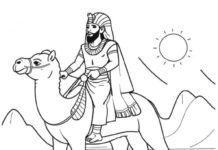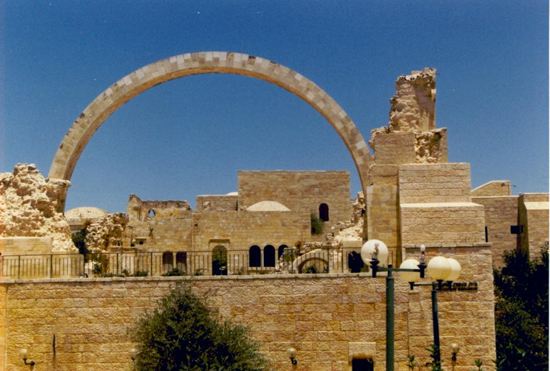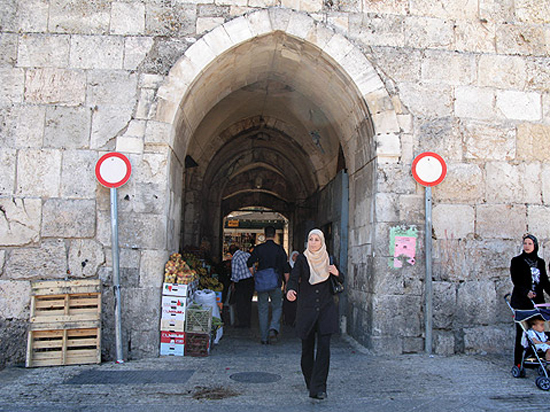Traveling to Jerusalem which is the capital of Israel/Palestine and also the largest city in Israel/Palestine is of a great adventure. Jerusalem Old City is said to be the oldest and the holiest city in the world. It has a history that takes you back to the 4th millennium BC. The old city is full of sites that are holy and thus it is a major site of pilgrimage for all three religions from all over the world. It is a belief that anyone who is a Christian, Jew or Muslim must once pay visit to this holy place although Jerusalem means “City of Peace” in Hebrew; sadly, it has not been exactly like that during its agitated 5,000-year history.
Jerusalem has seen fighting – by the Roman, Byzantine and Crusader Forces..lastly in the20th and 21st centuries by the Arab-Israeli conflicts, anyway there can’t be many people in the world who don’t have a desire to visit Jerusalem. Traveling to Jerusalem is not an easy place to visit, nor a risk free one, but if it’s a chance you’re prepared to take. Knowing that Jerusalem is in the center of the globe and is claimed by all religions.
The old city is filling with plenty of temples and ruins that any traveling visitor can visit. The old city of Jerusalem has a very strong combination of the Jewish and Arab culture. The city is also popular destination for non-religious traveling visitor , with its unmatched historical and spiritual importance, its network of museums and concerts, and the archaeological treasures that are continually discovered here.
The Old City of Jerusalem is added to the UNESCO World Heritage Site List in Danger.
The world’s three biggest religions view the importance of Jerusalem in three different ways:
Christians:
It is where Jesus is said to have been crucified and ascended to Heaven, and the site of the Church of the Holy Sepulcher.
Jews:
It is the home of the Ire Ha-Kodesh (the Holy City), the Biblical Zion, the City of David, the site of Solomon’s Temple “Wailing Wall” (remains of the Second Temple, The wall has lots and lots of scribbled messages to God, that are hidden behind the stones), and the eternal capital of the Israelite nation.
Muslims:
It is the site of the Dome of the Rock on the Temple Mount where the prophet Muhammad traveling( rose to)Heaven which represents the holiest place of the Islam religion. After the holy sites of Mecca and Medina, Jerusalem is the third most sacred place of Islam.
Jerusalem’s Old City is grandly enclosed The Walls of Jerusalem surround the area of the old city of Jerusalem. The walls were built between the years 1535–1538, during the reign of the Ottoman Empire in the region of Palestine, by the Ottoman Sultan Suleiman the Magnificent (In 1981, The Jerusalem walls were added). These high, yellowish-limestone walls pierced by eight historic gates. Each of its four tradition-named residential quarters (Armenian, Christian, Jewish and Muslim) .
The most significant of them, the Golden Gate or Shaar Harachamim in Hebrew (built around 648), has been sealed since the 16th century. The Golden Gate, located above ground level and below the Temple Mount. It is only visible from outside the city.
Golden (Mercy) Gate Facing the Mount of Olives on the eastern side of the Old City, this gate was constructed in the post-Byzantine period. According to Jewish tradition, when the Messiah comes, he will enter Jerusalem through this gate. To prevent him from coming, the Muslims sealed the gate during the rule of Suleiman.
Leen Ritmeyer believes that an earlier gate is preserved underneath the current gate.
Other Gates of the Old City:-
Jaffa Gate:
The main entrance to the city is the Jaffa Gate, built by Suleiman in 1538. The name in Arabic, Bab el-Halil or Hebron Gate, means “The Beloved,” and refers to Abraham, the beloved of God who is buried in Hebron So named because the road leading from it goes to the port city of Jaffa (Joppa); this gate is the only one on the western side of the Old City.
Damascus Gate:
Located on the northern wall, it is the busiest and most magnificent of all Jerusalem’s gates. Called the Shechem Gate by the Jews, the Arabs remember this gate as the “Gate of the Column” because of the tall pillar that stood in this gate’s plaza during the Roman and Byzantine period. Kenyon’s excavations underneath this Turkish gate found remnants of a triple-arched gateway dating to the time of the Roman Emperor Hadrian (135 A.D.).
St. Stephen’s Gate:
This gate is so named because of the tradition that the first Christian martyr was stoned outside this gate. However, an earlier tradition locates this execution north of the city. Lions’ Gate is another name for this eastern entrance into the Old City because of the four figures of lions, two on the left and two on the right that decorate the gate’s facade and reportedly placed there because of a dream of the builder Suleiman. Legend has it that Sultan Suleiman placed the figures there because he believed that if he did not construct a wall around Jerusalem he would be killed by lions.
Dung Gate:
Found in the south wall, this gate is closest in proximity to the Temple Mount. Since the 2nd century, refuse has been hauled out of the city through this gate, hence the name.
Different theories account for the naming of this gate, including one that puts it back to Omar’s conquest of Jerusalem in 638 A.D. when trash was cleared out of the city through this gate. It is also known as the Gate of the Moors because of the North African immigrants who lived in a neighborhood next to the gate in the 16th century.
Zion Gate:
Located in the south, this gate was used by the Israel Defense Forces in 1967 to enter and capture the Old City. This gate is also known as the Gate of the Prophet David because of the traditional location of David’s tomb on Mt. Zion. During the medieval period, it was called the Gate of the Jewish Quarter.
Hotels in the region:
Check availability, maps, photos and reviews before traveling, and book at the guaranteed lowest price.












































